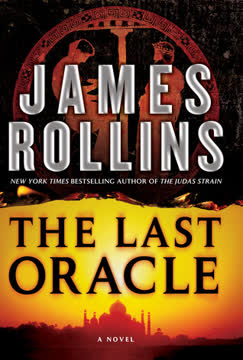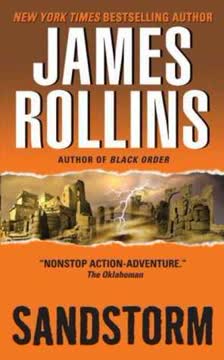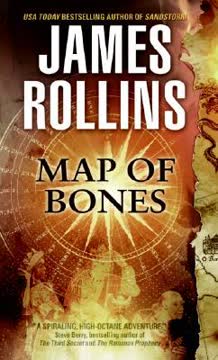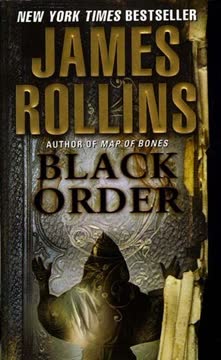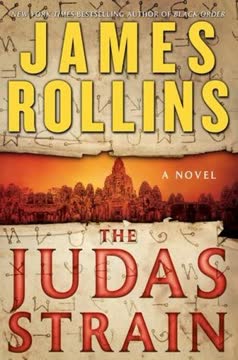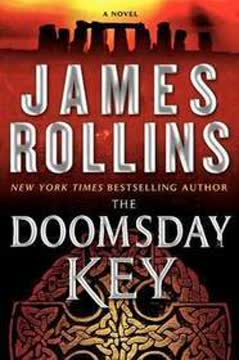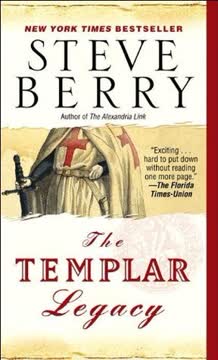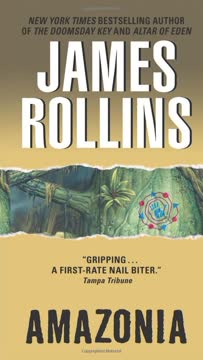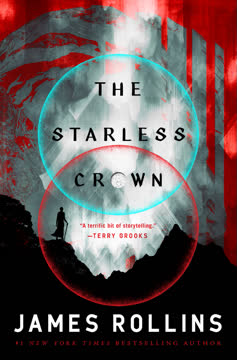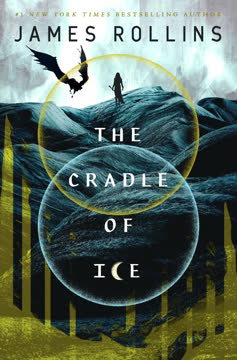Plot Summary
Oracle's Last Prophecy
In the dying days of the Oracle of Delphi, the last Pythia faces the destruction of her temple by Roman soldiers. She performs one final prophecy, aided by a strange, autistic girl named Anthea, whose visions foretell a future of fire and devastation. The Oracle's line, and the omphalos stone, are spirited away, setting in motion a secret legacy. The prophecy hints at a coming catastrophe, a "brother of the Hebrew boy" who will burn the world, and a new spring of prophecy that will flow from the child's line. This ancient warning, shrouded in mystery and myth, echoes through the centuries, its meaning lost but its threat undiminished, waiting to be awakened in a modern world on the brink.
Stolen Children, Stolen Future
In 1959, Soviet scientists led by Yuri Raev hunt down a Romani clan in the Carpathian Mountains, seeking children with prodigious savant abilities. Inspired by Nazi experiments, they abduct a group of genetically unique Gypsy children, including twins, to serve as the foundation for a secret project. These children, the chovihanis, are subjected to decades of experimentation, their talents amplified and controlled through brutal means. The theft of their future is not just personal but symbolic—a legacy of exploitation, eugenics, and the weaponization of human potential, all in the name of national security and scientific progress.
Death on the Mall
In present-day Washington, D.C., Commander Gray Pierce of Sigma Force is drawn into a deadly conspiracy when a homeless man dies in his arms on the National Mall. The man, Archibald Polk, is revealed to be a brilliant neurologist and the founder of Sigma. He leaves behind a mysterious ancient coin, marked with the temple of Delphi and a Greek epsilon, and is found to be radioactive. The murder is a warning and a puzzle, pulling Gray and his team into a web of secrets that connects the past to the present, and science to prophecy.
The Coin and the Skull
Gray and his partner Kowalski follow a radioactive trail to the Smithsonian's Natural History Museum, where they meet Dr. Elizabeth Polk, Archibald's estranged daughter. Together, they discover that Polk hid a simian skull with a neural implant inside a replica of the omphalos stone. The skull, also radioactive, is the key to a larger mystery involving ancient prophecy, genetic manipulation, and the origins of savant abilities. As they flee a staged bomb threat, pursued by shadowy government forces, the team realizes they are up against a conspiracy that spans continents and centuries.
The Girl Who Sees
A young Russian girl, Sasha, is revealed to be an autistic savant with a neural implant, capable of extraordinary remote viewing and artistic talent. She is tracked and abducted by rival factions, including Russian and American intelligence, each seeking to control her abilities. Sasha's drawings lead the Gypsy Luca Hearn to Sigma, and her presence becomes the focal point of a global struggle. Her deteriorating health, caused by her implant, forces an uneasy alliance between enemies, as her visions and talents may hold the key to preventing a coming disaster.
The Gypsy's Secret Lineage
Gray's investigation leads the team to India, where they uncover the true origins of the Romani people among the untouchable castes of Punjab. Guided by ancient coins and local allies, they discover a hidden Greek temple complex, built by the descendants of the last Oracle. The omphalos stone, the chakra wheel, and the Greek epsilon all point to a secret lineage of prophecy and savant talent, preserved through centuries of persecution and migration. The team realizes that the genetic line stolen by the Soviets is the same that once gave rise to the Oracles of Delphi.
The Chernobyl Connection
The conspiracy's modern face is revealed in Russia and Ukraine, where Senator Nicolas Solokov, himself a product of the secret project, orchestrates a plot to assassinate world leaders at the Chernobyl reactor's sealing ceremony. Using hidden explosives and the movement of the new Sarcophagus, he plans to expose dignitaries to a lethal dose of radiation, creating chaos and paving the way for a new Russian empire guided by augmented savants. Gray and Kowalski race against time to stop the attack, while the true scale of the threat—Operation Uranus—becomes clear.
The Temple in the Hills
In a secret Greek temple in India, the team deciphers a mosaic that tells the story of the Oracles' flight, the merging of Greek and Indian traditions, and a dire warning: "The world will burn unless the many become one." The mosaic depicts five oracles supporting a fiery boy, hinting at a necessary union of talents to avert catastrophe. The omphalos, the chakra wheel, and the genetic legacy all converge in this chamber, revealing that the savant children are not just victims but the world's last hope.
The Many Become One
As Operation Saturn is unleashed in the Ural Mountains—threatening to poison the world's water with radioactive waste—the savant children, led by Pyotr and Sasha, fall into a collective trance. Their talents, amplified and united, create a psychic communion that allows them to act as one. Pyotr, an empath, becomes the vessel for all their abilities, guiding Monk and the others through chaos and violence. The children's unity is the fulfillment of the ancient prophecy, the only force capable of countering the engineered apocalypse.
Operation Uranus Unleashed
With Chernobyl's attack narrowly averted, the true horror unfolds in Russia as Operation Saturn begins. General-Major Savina Martov, driven by grief and vengeance, initiates the flooding of Lake Karachay, threatening millions. The Gypsies, led by Luca, mount a daring assault on Chelyabinsk 88, while Gray, Monk, and the children fight to stop the disaster. Betrayals and sacrifices abound, as the legacy of stolen children and stolen futures comes to a head in a battle for the fate of humanity.
The Burning World
As the toxic flood pours into the earth, the only hope lies with Marta, the empathic chimpanzee, and Pyotr, who together close the iris and stop the worst of the disaster. In doing so, Pyotr draws upon the collective talents of the children, burning himself out in the process. The world is saved from annihilation, but at a terrible cost. The prophecy is fulfilled: the many become one, and the world is spared the fire, but innocence and lives are lost.
The Sacrifice of Pyotr
Pyotr's sacrifice is both literal and symbolic. By absorbing the talents and pain of his fellow children, he becomes the vessel through which the world is saved. His death, aided by Marta's final act of love, frees the others from the psychic orbit that threatened to consume them all. The children awaken, their talents diminished but their lives restored. Pyotr's act is the ultimate fulfillment of the Oracle's prophecy—a martyrdom that ensures a future for his brothers and sisters, and for the world.
The Aftermath and the Children
In the wake of the crisis, the surviving children are brought to Washington, D.C., where they are fostered by Gypsy families. Their implants are removed, their talents faded but their autism lessened. The world is left to reckon with the legacy of exploitation, the dangers of unchecked science, and the hope that comes from compassion and unity. Gray, Monk, and the others struggle with loss and recovery, while the children begin new lives, watched over by those who understand both their gifts and their burdens.
Memory's Return
Monk, rescued from Russia and operated on to remove his amnesia-inducing implant, slowly begins to recover fragments of his memory. His reunion with Kat and their daughter Penelope is bittersweet, marked by hope and uncertainty. Sasha, now safe, visits her brother Pyotr, who remains unresponsive—a vessel emptied by sacrifice. Yet, in the final moments, a hint of something new stirs within Pyotr, suggesting that even in loss, there is the possibility of rebirth and the enduring power of love.
Characters
Gray Pierce
Gray Pierce is the central protagonist, a Sigma Force commander whose intelligence and determination drive the investigation. Haunted by the loss of his friend Monk and the burdens of leadership, Gray is both a man of action and deep introspection. His relationships—with his team, with Elizabeth Polk, and with the children—reveal a capacity for empathy and sacrifice. Gray's journey is one of confronting the limits of science, the weight of history, and the necessity of hope in the face of overwhelming darkness.
Monk Kokkalis
Monk is Gray's closest friend and a former Sigma operative, believed dead but discovered alive in Russia, suffering from amnesia induced by a neural implant. His journey from confusion to self-sacrifice is marked by flashes of his old self—courage, humor, and fierce protectiveness. Monk's bond with the children, especially Pyotr, and his ultimate role in averting disaster, highlight his deep humanity. His gradual recovery and reunion with his family underscore the novel's themes of loss, resilience, and the possibility of renewal.
Elizabeth Polk
Elizabeth is the daughter of Archibald Polk, a brilliant but distant neurologist. Her expertise in anthropology and her emotional journey from resentment to understanding mirror the novel's exploration of legacy and reconciliation. Elizabeth's role as both investigator and interpreter—of ancient languages, family secrets, and the children's plight—makes her a vital link between past and present, science and myth. Her relationship with Gray and her own healing process reflect the novel's emphasis on forgiveness and the search for meaning.
Sasha
Sasha is a young Russian girl, an autistic savant whose neural implant amplifies her extraordinary abilities. Hunted and exploited, she becomes the focal point of the global conspiracy. Sasha's drawings and visions guide the protagonists, while her deteriorating health and vulnerability evoke both fear and compassion. Her psychic bond with her twin brother Pyotr and her ultimate survival, at the cost of her talents, embody the novel's central question: what is the price of genius, and who gets to decide its use?
Pyotr
Pyotr, Sasha's twin, is an empath whose true power is revealed in the novel's climax. By absorbing the talents and pain of the other children, he becomes the "one" foretold in prophecy, sacrificing himself to save the world. Pyotr's journey is one of silent suffering, deep love (especially for Marta, the chimpanzee), and ultimate selflessness. His fate—catatonic but at peace—serves as both a warning and a testament to the costs of exploitation and the redemptive power of compassion.
Luca Hearn
Luca is a Romani clan leader whose knowledge of his people's history and willingness to fight for the stolen children make him an indispensable ally. Driven by a sense of justice and ancestral duty, Luca bridges the gap between the ancient prophecy and the modern struggle. His leadership in the assault on Chelyabinsk 88 and his role in fostering the rescued children highlight the importance of community, tradition, and the fight against erasure.
Savina Martov
General-Major Savina Martov is the mastermind behind the Russian project, a woman who sacrifices everything—including her own son—for the dream of a new Russian empire. Her psychological complexity lies in her ability to justify cruelty as necessity, her moments of private grief, and her ultimate downfall at the hands of the very children she sought to control. Savina represents the dangers of ideology unchecked by empathy, and the tragic consequences of confusing legacy with destiny.
Nicolas Solokov
Nicolas is Savina's son and the intended figurehead of the new world order. Born of the stolen genetic line, he is both a product and a victim of the project's ambitions. His charisma, intelligence, and ruthlessness are matched by a deep insecurity and a need for validation. Nicolas's orchestration of the Chernobyl plot and his ultimate demise, betrayed by those closest to him, serve as a cautionary tale about the perils of hubris and the limits of control.
Kowalski
Kowalski is Gray's partner, a former Navy man whose size and strength are matched by surprising sensitivity and loyalty. Often providing comic relief, Kowalski's love of shoes, cigars, and simple pleasures contrasts with the darkness of the plot. Yet, his courage in battle, his protectiveness toward Elizabeth, and his role in the final assault reveal a depth of character that grounds the team and offers moments of humanity amid chaos.
Marta
Marta is more than an animal; she is a survivor of the same experiments as the children, possessing a unique empathic bond with Pyotr. Her presence offers comfort, protection, and, ultimately, the means to avert disaster. Marta's final act—closing the iris and sacrificing herself—embodies the novel's themes of love, loyalty, and the blurred boundaries between human and animal, science and spirit.
Plot Devices
Ancient Prophecy and Genetic Legacy
The novel's central device is the intertwining of ancient prophecy with modern genetics. The Oracle's warning, the omphalos stone, and the chakra wheel serve as both literal and symbolic keys, linking the past to the present. The genetic line of savant talent, preserved through centuries of migration and persecution, becomes the battleground for competing visions of the future. The prophecy's fulfillment—"the many become one"—is realized not through supernatural means, but through the convergence of science, empathy, and sacrifice.
Dual Timelines and Converging Mysteries
The story unfolds across multiple timelines and locations, from ancient Greece to Soviet Russia, from Washington, D.C., to the Ural Mountains. Each thread—ancient prophecy, Nazi and Soviet experiments, modern political intrigue—converges on the present crisis. The use of artifacts (the coin, the omphalos, the skull), coded messages, and mosaics provides a treasure-hunt structure, while the gradual revelation of the children's abilities and the true nature of the threat builds suspense and emotional resonance.
Psychic Communion and Empathy
The climax hinges on the children's psychic communion, orchestrated by Pyotr, who becomes the vessel for their collective abilities. This device literalizes the novel's theme of unity—the many becoming one—and provides a plausible (within the story's logic) means of averting global catastrophe. The use of empathy, both as a talent and as a narrative force, challenges the boundaries between self and other, science and spirit, and underscores the costs and possibilities of true connection.
Foreshadowing and Symbolism
The novel is rich in foreshadowing: the Oracle's prophecy, the recurring image of fire, the chakra wheel, and the motif of sacrifice all point toward the final convergence. The use of mirrored events—ancient and modern betrayals, stolen children, the burning world—reinforces the cyclical nature of history and the possibility of breaking the cycle through compassion and choice.
Analysis
The Last Oracle is a high-concept thriller that weaves together the threads of ancient prophecy, genetic engineering, and the exploitation of human potential. At its core, the novel interrogates the costs of genius—who owns it, who suffers for it, and what responsibilities come with it. By linking the Oracles of Delphi to modern autistic savants, Rollins explores the idea that the "madness" of prophecy is both a blessing and a curse, a force that can change the world for better or worse. The novel warns against the dangers of unchecked ambition, the dehumanization of the vulnerable, and the seductive allure of control—whether by science, politics, or ideology. Yet, it also offers hope: that unity, empathy, and sacrifice can break the cycle of exploitation and open the door to healing and renewal. In a world obsessed with progress and power, The Last Oracle asks us to remember the value of compassion, the limits of knowledge, and the enduring mystery of the human spirit.
Last updated:
Review Summary
The Last Oracle receives mostly positive reviews, praised for its fast-paced action, intriguing blend of history and science, and engaging characters. Readers appreciate the exploration of autistic savants, Greek mythology, and Romani culture. Some criticize the book's length and far-fetched plot elements. Many enjoy the return of beloved characters and the emotional depth, particularly regarding the chimpanzee Marta. While some found it formulaic, most readers consider it an exciting addition to the Sigma Force series.
Sigma Force Series
Similar Books
Download PDF
Download EPUB
.epub digital book format is ideal for reading ebooks on phones, tablets, and e-readers.
